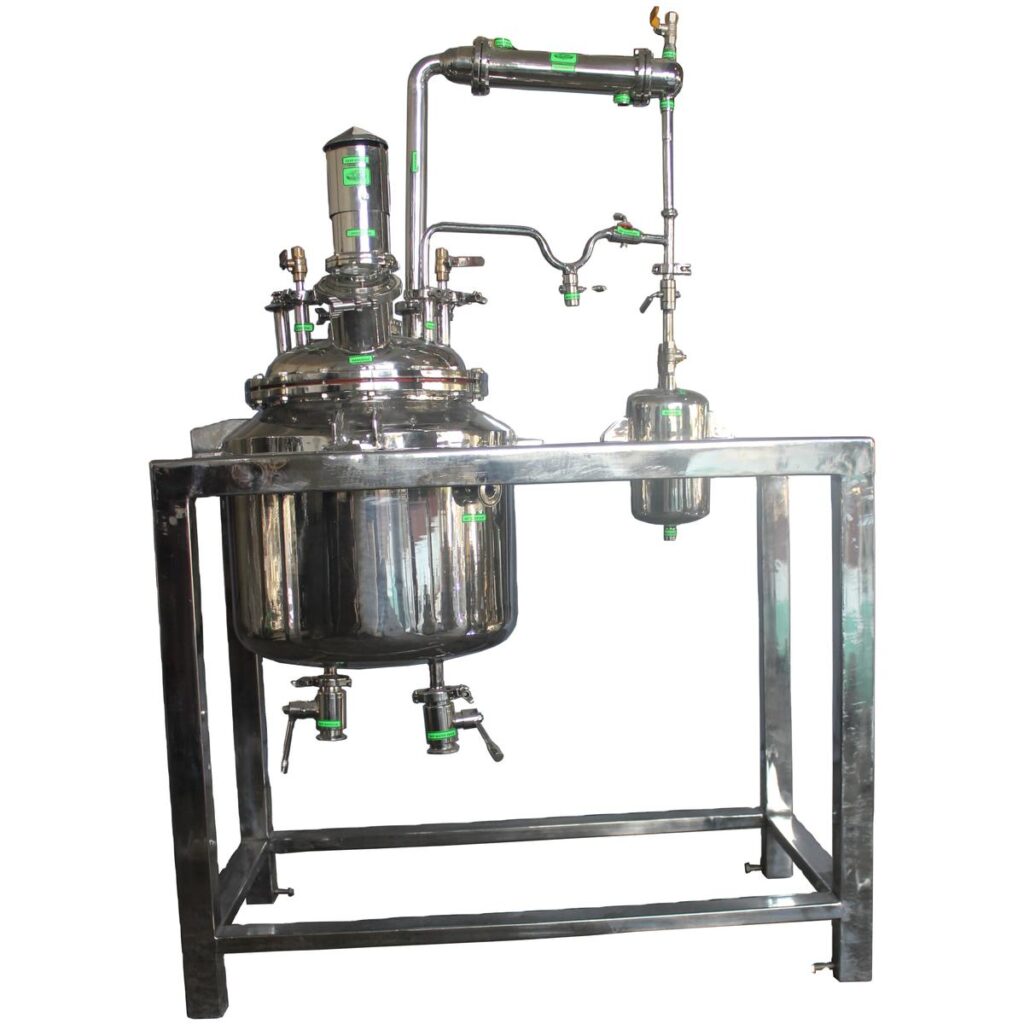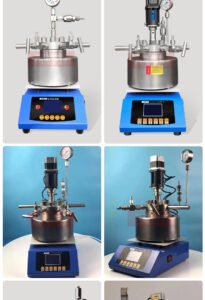The Essential Specifications of Stainless Steel Reaction Vessels for Industrial and Laboratory Use
In industrial and laboratory settings, selecting the right equipment for conducting chemical reactions is paramount. A stainless steel reaction vessel specification plays a critical role in determining the success of these processes. Stainless steel vessels offer excellent durability, resistance to corrosion, and the ability to withstand high pressure and temperatures, making them ideal for a variety of chemical reactions. This article explores the key features and specifications of stainless steel reaction vessels, highlighting the advantages of choosing high-quality vessels like the AKGF-30L Explosion-Proof Double-Layer Stainless Steel Reactor from EquilRxnLab.

The Importance of Stainless Steel in Reaction Vessels
Stainless steel is a preferred material for manufacturing reaction vessels due to its exceptional strength, resistance to corrosion, and ability to endure harsh chemical environments. 304 stainless steel is commonly used, though 316 stainless steel is chosen for more corrosive environments. The resilience of stainless steel makes it the ideal choice for chemical reactions that require precise temperature control, high pressure, and mixing.
Key Specifications of Stainless Steel Reaction Vessels
A stainless steel reaction vessel specification encompasses several aspects that determine the vessel’s suitability for different chemical processes. These specifications include the material used, reaction volume, wall thickness, pressure range, and agitation capabilities. Understanding these specifications is essential when selecting a vessel for your application.
Material Selection: 304 vs. 316 Stainless Steel
The primary materials used for stainless steel reaction vessels are 304 and 316 stainless steel. Both provide excellent resistance to corrosion, but 316 stainless steel offers superior protection in environments where chemicals can be highly corrosive. The choice between these materials depends on the type of chemicals involved in the reaction and the level of corrosion resistance needed. For general applications, 304 stainless steel is sufficient, but for more aggressive chemicals, 316 stainless steel is recommended.
Reaction Volume and Customization
One of the most important factors in selecting a stainless steel reaction vessel is the reaction volume. The AKGF-30L Explosion-Proof Double-Layer Stainless Steel Reactor is a great example, providing a 30L reaction volume that suits various chemical processes. The vessel can also be customized in terms of kettle diameter and other specifications, allowing for flexibility in design and operation. Customization ensures the vessel meets the specific needs of your application, whether for small-scale laboratory experiments or larger industrial processes.
Pressure and Temperature Capabilities
For many chemical reactions, it is crucial to ensure that the vessel can handle high-pressure and high-temperature environments. The AKGF-30L reactor is designed to withstand a working pressure range of 1 to 0.59 MPa, providing reliability and safety during chemical reactions. The inner and outer walls of the vessel are 4mm thick, and this can be adjusted depending on the pressure requirements of the reaction. This feature makes it suitable for both high-pressure and low-pressure applications, offering flexibility for different industries.
Agitation and Motor Power
Effective agitation is vital for achieving uniform mixing in a chemical reaction. The AKGF-30L reactor features a motor with a power of 250W, capable of rotating at speeds ranging from 0 to 450 RPM. This adjustability in rotation speed ensures that the vessel can handle a wide range of chemical processes, whether slow or fast mixing is required. Additionally, the agitator shaft is made from stainless steel and is coated with fluorine materials for enhanced durability, especially in corrosive reactions.
Temperature Control and Digital Display
Precise temperature control is essential for many chemical reactions to occur efficiently and safely. The AKGF-30L reactor features a digital temperature display and speed adjustment controls, enabling operators to easily monitor and regulate the temperature and mixing speed during the reaction process. This level of control ensures the reaction is carried out under optimal conditions, leading to better results.
Advantages of Stainless Steel Reaction Vessels
- Durability and Longevity: Stainless steel reaction vessels are known for their robust construction, which makes them highly durable and capable of withstanding harsh chemical reactions without degradation.
- Corrosion Resistance: Both 304 and 316 stainless steel offer excellent resistance to corrosion, ensuring that the vessel maintains its integrity even when exposed to aggressive chemicals.
- Customizability: Stainless steel reaction vessels can be customized to meet specific requirements, whether in terms of reaction volume, material selection, or agitator design.
- Safety Features: Explosion-proof features, high pressure ratings, and the ability to handle extreme temperatures make stainless steel reaction vessels one of the safest options for conducting chemical reactions.
- Precision: Stainless steel reaction vessels provide precise control over reaction conditions, such as temperature, pressure, and mixing speed, which are crucial for producing consistent and high-quality results.
Applications of Stainless Steel Reaction Vessels
Stainless steel reaction vessels are used across various industries for numerous applications. Some of the common applications include:
- Chemical Manufacturing: For reactions involving the synthesis of chemicals, polymers, and other materials.
- Pharmaceutical Production: To formulate drugs, active pharmaceutical ingredients, and other pharmaceutical products.
- Food Processing: In applications such as fermentation, emulsification, and sterilization processes.
- Energy Production: For biofuel synthesis and other catalytic reactions.
In these industries, the ability to precisely control the reaction conditions leads to higher efficiency, better product quality, and a safer working environment.
Selecting the Right Stainless Steel Reaction Vessel for Your Application
When choosing a stainless steel reaction vessel, there are several factors to consider:
- Application Requirements: Consider the specific needs of your process, such as pressure, temperature, and volume, to ensure the vessel is suitable for your requirements.
- Material Choice: Choose between 304 or 316 stainless steel based on the corrosiveness of the chemicals involved in the reaction.
- Customization: Ensure that the vessel can be customized to meet your specific needs, such as agitator design, volume, and pressure capabilities.
The AKGF-30L Explosion-Proof Double-Layer Stainless Steel Reactor from EquilRxnLab is an excellent choice for those looking for high-performance, customizable, and durable reaction vessels that can handle a variety of chemical processes.
For more details on stainless steel reaction vessels and to explore other products, visit EquilRxnLab. If you have specific requirements, feel free to contact us.
Explore More:



